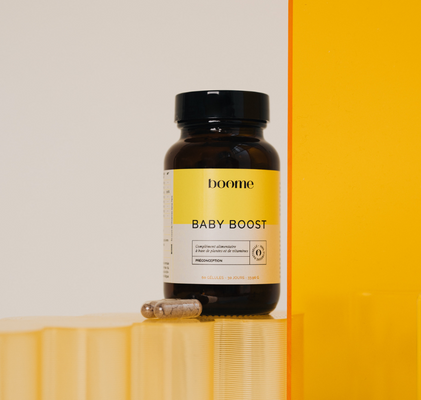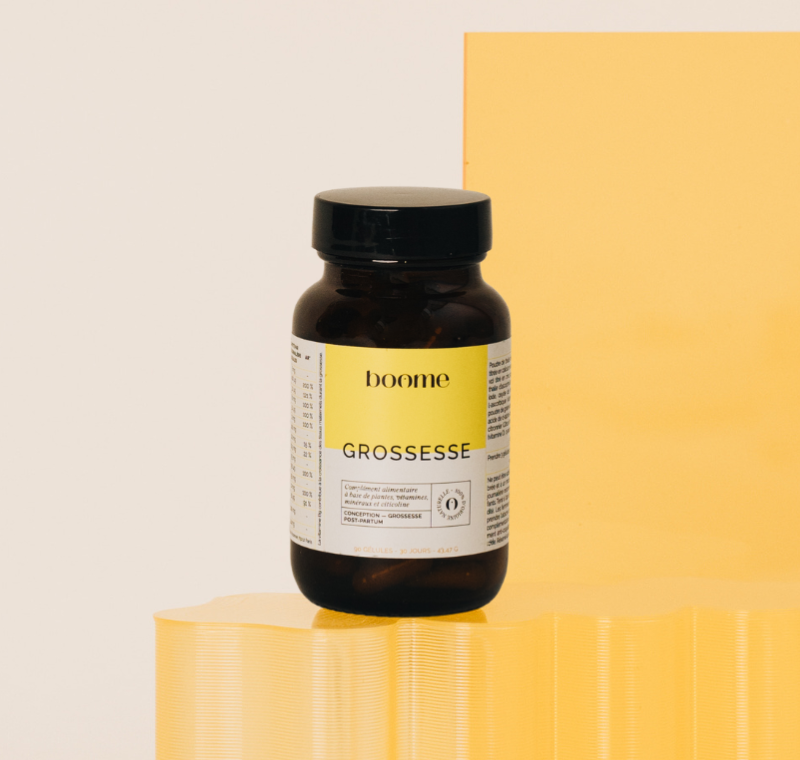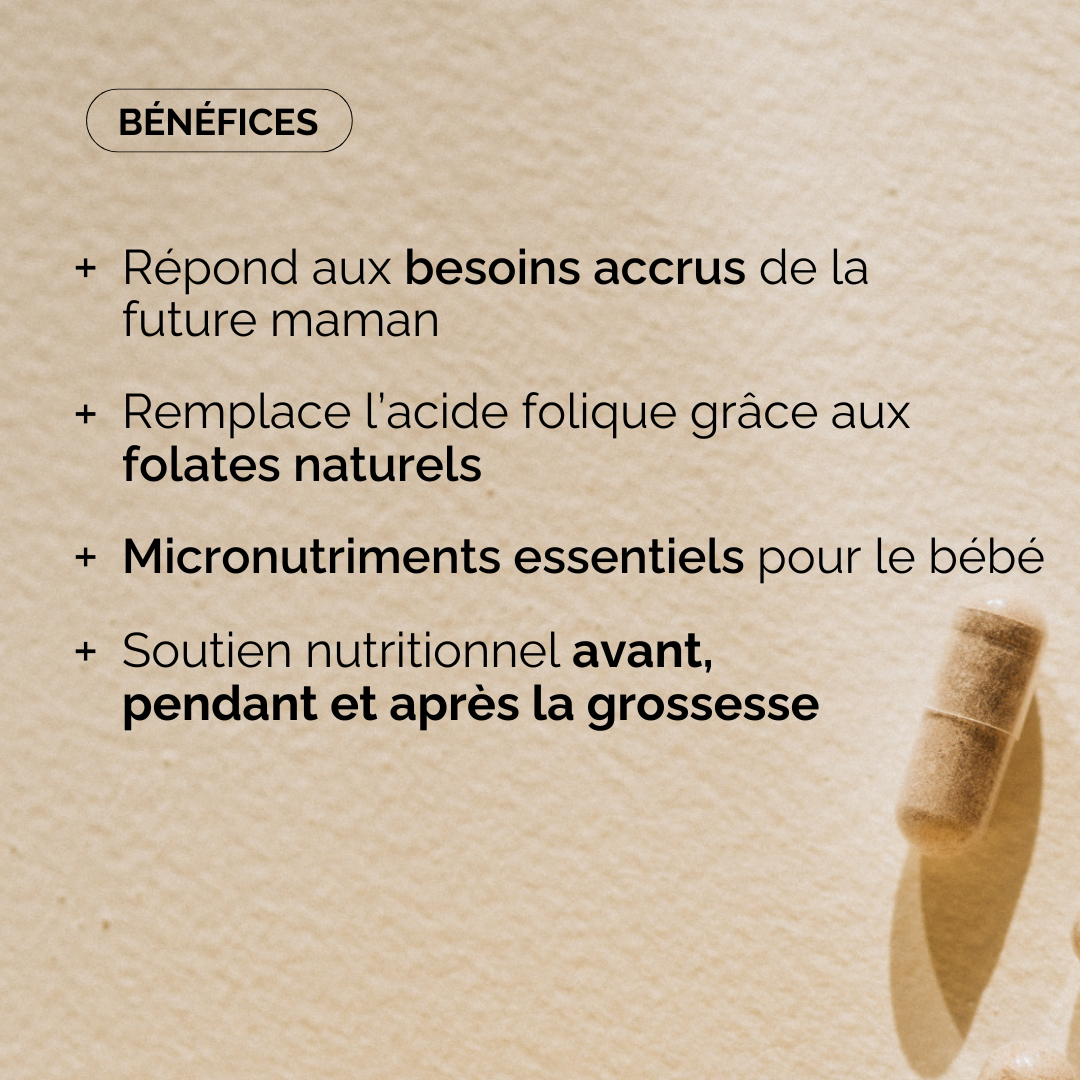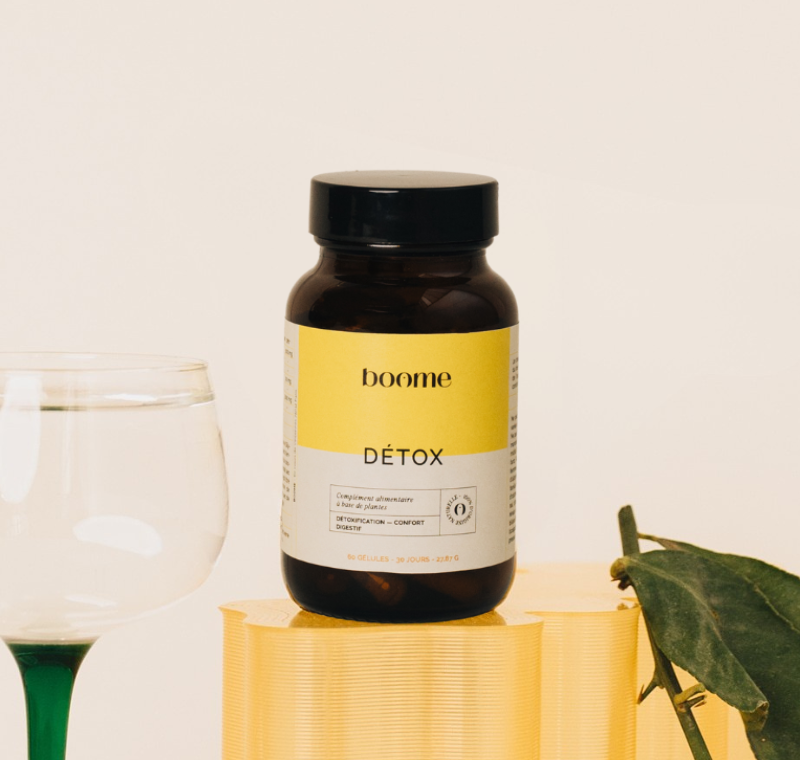
Are you planning a baby? To maximize your chances during this preconception phase, learn not only to understand your body but also how to best prepare it. We're here for both. Because supporting expectant and new mothers is the life we've chosen to lead.
Ovulation: what, when, how?
Did you prefer to write forever-friendship notes in Lucie's diary during biology lessons? ( We admit, we did ). At that time, talking about babies and conception seemed a long way off. And now, we're not all super clear about our cycles, their duration, and how they work. Let's go back to the basics: ovulation is the moment when the ovary (or more precisely, an ovarian follicle) releases an egg cell through the fallopian tubes. This egg cell can meet a sperm and form a first embryo cell during fertilization. Basically, it's the period when we're most fertile, the binGO moment to "have fun," happily, often!
As for the date of ovulation, it is as variable as each woman's cycle. While we generally speak of an "average" cycle of 28 days, some women have shorter ones (20), others very long ones (40). In short, there is no absolute truth, as always when it comes to our bodies. Some women ovulate very regularly (even if a simple source of stress can disrupt a very regular cycle) while for others, it is less predictable. Certain pathologies, including polycystic ovary syndrome, can also cause dysovulation.
REMEMBER: In theory, ovulation occurs on average 14 days before the end of your cycle (the start of which is announced by the first day of your period). But be aware that hormonal fluctuations vary from one woman to another. Thus, your ovulatory peak can also occur between 11 and 16 days, or sometimes even less, if your cycle is unbalanced.
IMPORTANT: Your fertile window lasts approximately 5 to 7 days (sperm lifespan can last up to 5 days before ovulation, and between 1 and 2 after, the egg having a lifespan of 12 to 24 hours).
So, keep your evenings free at least five days before ovulation: that will be the (right) time to make love. And even start again as often as possible that week!
Deciphering the body's signs to know when you're ovulating
The signs of ovulation are numerous and fairly similar for all women experiencing a normal cycle. But recognizing them requires a little attention. If your goal is to get pregnant, symptothermal method will be your friend. It can be used as a natural contraceptive method for sexual intercourse, and conversely, it can be an indicator of the days when your fertility is at its peak. And therefore, boost your chances of conception! It's based on observing three clear signs your body gives you:
1. Monitor your body temperature (thermal curve method)
After the follicular phase comes the ovulation phase, where body temperature increases. This lasts about ten days, and the variation isn't obvious (it may even be nonexistent in some women). But if you feel a little warmer at night, or you sweat a little more, that can give you a clue. For more precision, you can develop your temperature curve, over at least two cycles: this also allows you to see if you have regular ovulation. And know that there are mobile applications dedicated to measuring cycles, to simplify your life.
2. Observe your cervical mucus (Billings method)
Cervical mucus: a glamorous term for odorless vaginal discharge. It becomes more abundant when you ovulate, and it's also stickier and more transparent. You could compare it to egg white, stretchable between your fingers. But cervical mucus and your cycle are closely linked! Because it changes with each luteal phase, follicular phase... and ovulatory phase. In short, a natural gem for measuring cycles!
Be careful, however, not to confuse it with white discharge - present throughout the menstrual cycle and not part of the ovulation process - or with an infection, which causes smelly discharge. Once the ovulation cycle is over, the mucus thickens and gradually disappears.
Are you confused about your cycle? Can't figure out when sex is most likely to coincide with ovulation? Don't panic, we'll help you figure things out with our article : How to Calculate Your Menstrual Cycle !

Achat express
3. Observe your cervix
During the menstrual cycle, it's not just our mood that changes! Our cervix does too. Its position and texture evolve, so much so that this can tell us about where we are. In the pre-ovulatory phase, the cervix is rather dry, closed, and hard; on the contrary, during ovulation it is high, open, and moist (cuckoo, cervical mucus).
Apart from symptothermalism, other small signs can be taken into account:
4. Control (or not!) your libido
This is an area where we are not all equal, but the hormones released during ovulation (estrogen) boost libido. A peak that lasts 4/5 days, during which, normally, lubrication is also increased. All good!
5. Listen to (or touch) your breasts
A "subtle" symptom, but one that can put you on the right track! Who hasn't felt their breasts feel heavier, sore, or sensitive as their period approaches? This is also the case during ovulation.
6. Having a stomach ache
Unfortunately, pain isn't just a symptom of menstruation. The intensity isn't the same for everyone, but it's common to experience a feeling of heaviness in the lower abdomen, bloating, abdominal pain, or abdominal cramps. Fortunately, all of this is only supposed to last a few hours. Breathe easy!
7. Take an ovulation test
Although these symptoms are the most common and most developed in women during ovulation, it is possible to experience none of them, or not all of them. The most certain way to know which part of our cycle we are in, and/or if we have little time to check our symptoms, is the ovulation test. On the same principle as a pregnancy test, we also pee on a stick, which will detect the level of ovulation triggering hormone (LH) and will turn out to be positive (if we are in the right period).
How do you know if you're not ovulating?
Some menstrual cycles may be devoid of ovulation. However, this absence of ovulation can be quite difficult to detect! So, what does it mean? Generally:
- long cycles;
- an irregular menstrual cycle;
- or even totally absent.
So, if you haven't had your period for several months, or your cycles are unpredictable... This could indicate an ovulation disorder.
Certain physical symptoms can also put you on the trail of a lack of ovulation:
- persistent abdominal pain;
- an absence of the usual variations in your cervical mucus;
- breasts less sensitive than usual mid-cycle.
If you're still unsure, we recommend monitoring your basal temperature over several cycles. If it remains constant, without a spike around day 14, it could mean you're not ovulating.
Last tip: in this case, you can also get ovulation tests. If they remain negative for several cycles, it means they don't detect any peak in luteinizing hormone. So, again... This is probably an anovulatory cycle. If this is the case, don't hesitate to talk to your midwife. She will probably prescribe blood tests that will help you see things more clearly.
Give your body a little boost
Having a baby is a bit like a marathon: so when you know you want to start, you might as well prepare your body for the “ordeal”! This is the idea behind our supplements.
- Our Detox food supplement , phase 1 of our preconception protocol, was created to help you reset the counters, “cleanse” your body (the liver in particular) by ridding it of its toxins.
- If you are having difficulty conceiving or experiencing irregular cycles, you can continue to phase 2 with Baby Boost, our fertility vitamins for women . They are designed to boost fertility by improving ovulation and egg quality and by rebalancing the cycle.
- Our best-selling pregnancy vitamins can also be taken after Detox, whether or not combined with Baby Boost, and as soon as you want to have a child. They allow you to stock up on good vitamins and minerals and increase your reserves of natural vitamin B9, which can be absorbed by the body and replaces the synthetic folic acid generally prescribed a few months before becoming pregnant .
And for all those who want to know even more, we invite you to follow the Instagram account of Emancipées , alias Laurène Sindicic, the queen of fertility who will make you love natural science classes again!










